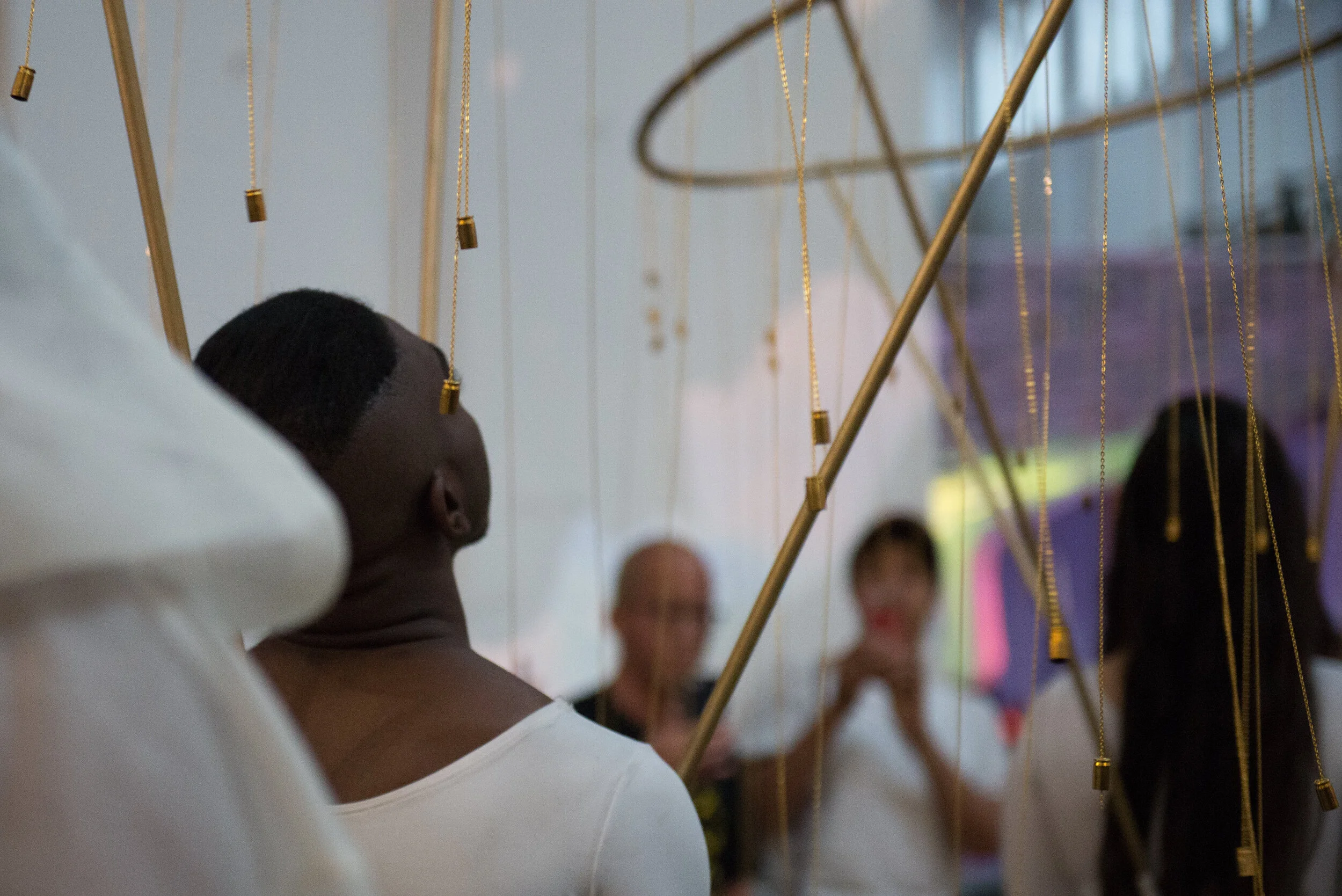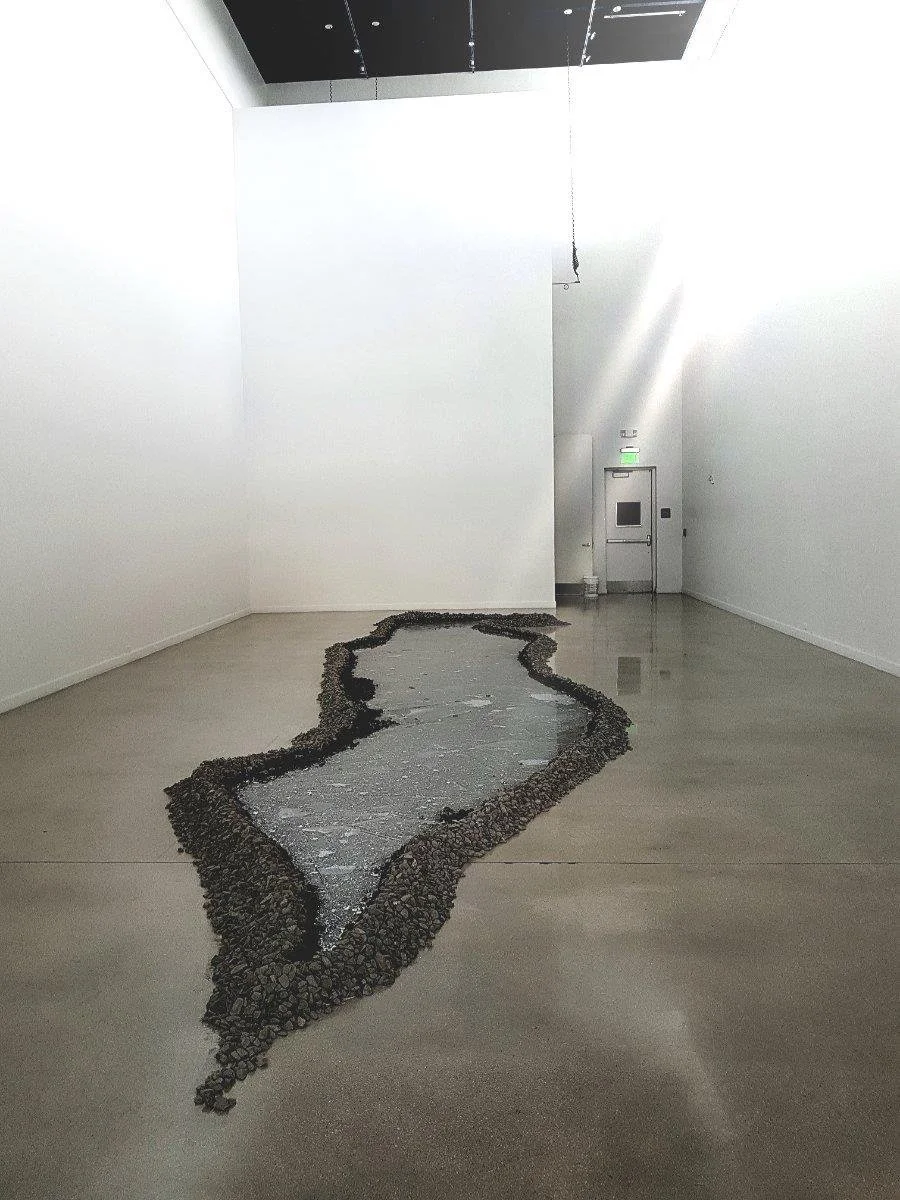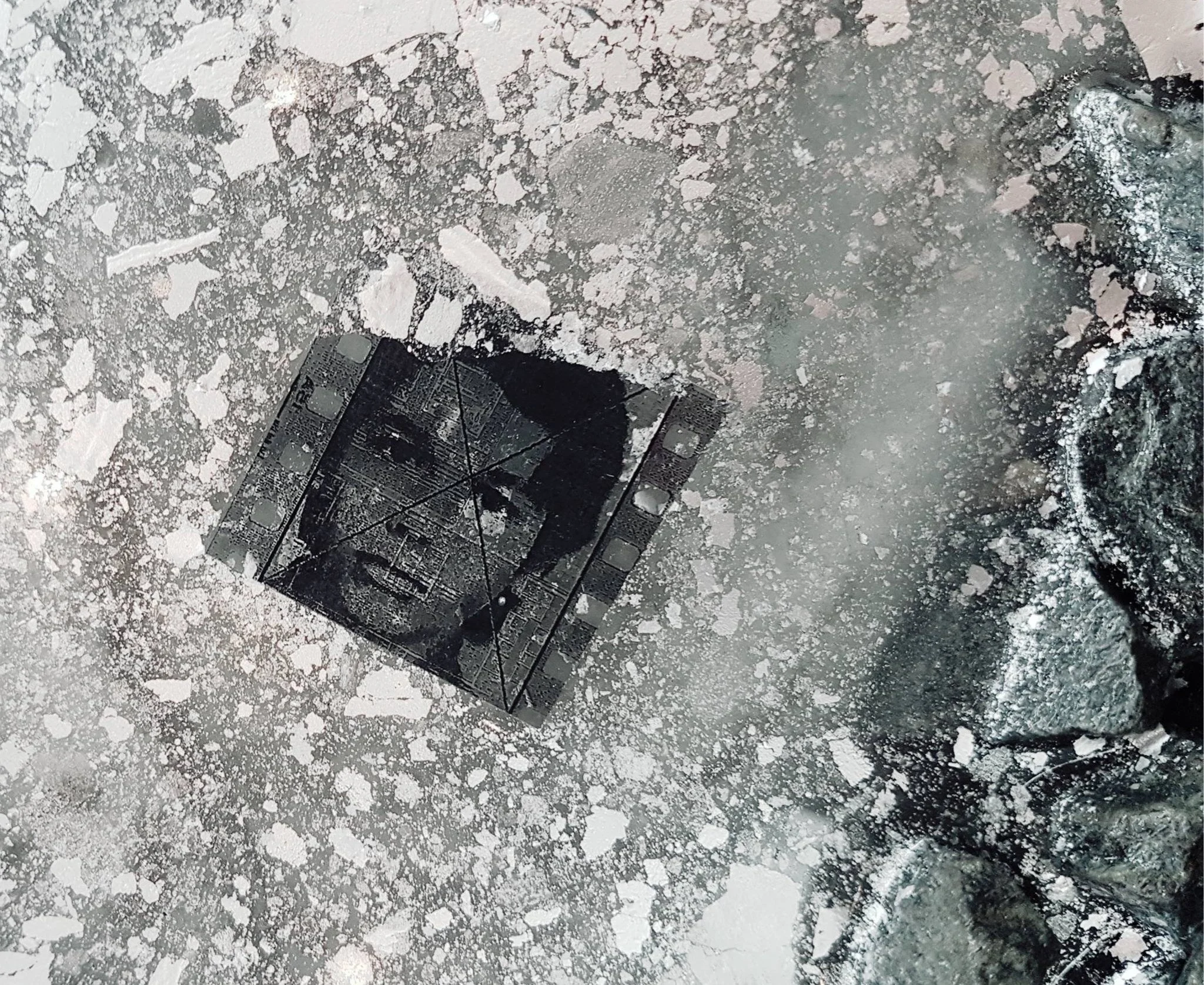Sonic Fracture
“Sonic Fracture” is drawn from sounds made by the artist throwing bullet casings into her crucible. Different pitches and tones are pulled from the sounds and are transformed into a composition. Cast forms made through this process to reflect the sounds are scattered on the floor. (2022) Soap, Bullet Casings, Aluminum, Bronze, Wax, Sound
I Hold You Close
Kinetic sculpture composed of steel, melted bullets, gun parts, dc motors and engravings of the artist and her partner. (2023)
Act I
Pitches and tones are pulled from the sound of a gun being cut. Sounds are composed using objects made from transformed weapons. (2021)
The Line of Fire (I)
One line of fire is made every year that the artist is alive. There is one bullet chime for every expected queer person to die from gun violence in the year to come. Rather than mourning the past, this work mourns the potential future. This is the 2020 line of fire.
The Line of Fire (II)
One line of fire is made every year that the artist is alive. There is one bullet chime for every expected queer person to die from gun violence in the year to come. Rather than mourning the past, this work mourns the potential future. This is the 2021 line of fire.
The Ring of Freedom
To honor and mourn those who died during the Orlando Pulse Club shooting, a SIG SAUER MCX rifle - the exact rifle used during the shooting - was melted down to make 49 liberty bells for the 49 victims who died. Their names are engraved on each of the bells. The liberty bell not only represents American Freedom but is also used by the NRA to support second amendment rights. (2016)
The Last Dance
Queer dancers and singers finish the last dance which should have been finished - but could not - during the Orlando Pulse Club shooting. Performers include: Stefa, Rex, Maps and Antonius Bui (2018) 1 hour long.
I Feel Safe When
Collaborative project with Montgomery College Students, as part of the Social Engaged Artist Residency in 2020.
I Feel Safe When
This was created by Beverly Minker for EFP-TV, Montgomery College's student-produced magazine format program. Stephanie Mercedes was an artist in residence at Montgomery College where she taught them how to melt down bullets to make school bells and in reaction to shooting drills and posters asks the question, when do you feel safe? (2020)
Desplazamiento
“desplazamiento” During the Argentine Dictatorship there were so many political prisoners or the ‘disappeared’ dropped into rio de la plata (“death flights”) that the sea level rose. This 40 foot long installation re-images the waters of rio de la plata. Images of those who disappeared slowly drop from the sky into the water of the installation, and like the bodies which once fell - slowly displace the sea.
Exhibited at Broward College in Florida, USA. (2019) Sound, Negatives, Motor, Water. Rocks
It Could Have Lasted Forever
Dancers wearing mobiles with 38 bullet chimes each for the average number of people who die from gun violence in the US every day. Performers walk to procession with singers that sing in English and Spanish about gun violence. Performed again at the Kennedy Center’s Reach Opening (2019) as part of Carrie Mae Weems parade, “The Future is Now: And We are It.” (June 2018) Smithsonian Arts and Industries Building, 1 hour. Performers include: Rex, Maps, Stefa
Desplazamiento
A participatory performance around my installation "desplazamiento." Like the bodies that were thrown into the Rio de la Plata during the Argentine Dictatorship (1976-1983) images of this horrific period of time fall from the ceiling and slowly displace the water. I lead the audience through a participatory experience of the work so they become part of the activation of this dark memory. (2019)
En Sonido (Sound Loop)
“En Sonido” is a metal basin with a screenshot of desaparecido Jaime José Colmenares Berrios printed on its floor. Exciters are attached to the bottom of the basin. Viewers are invited to move hydro contact microphones that activate a feedback or “sound” loop, making the sculpture and water shake. (2022) Steel, Speakers, Water, Subwoofer, Amp, Feedback
Relicarios
“Los Relicarios” is a installation of suspended lighted lockets that reflect on female methods of protest during the Argentine Dictatorship. Las Madres (the mothers) use to protest the disappearance of their children with lockets in the streets. A locket is a feminine, delicate and intimate object normally worn close to the heart. These women used their emotions to effectively speak truth to power. Suspended lockets have the faces of those disappeared while others are left blank with a twinkling light, (because we do not have images for all of the disappeared). The artist re-sings protests songs the mothers, now grandmothers, use to and still chant on the streets: “Nunca, nunca, nunca paramos / siempre, siempre, siempre luchamos / nunca, nunca, nunca olvidamos” (We will never stop, with will always fight, we will never forget). (2018) Sound, LEDS, Aluminum, Electrical Wire
“La Fotógrafa, sin la Camera”
(A Photographer, Without the Camera)
Mercedes recently discovered a September 7, 1982 archival newspaper clipping in which the NYC Philharmonic Orchestra visited Buenos Aires at the high of the violent Argentine Dictatorship. Carlos Juan Llambí, a human rights lawyer echoed the sentiments of many in the audience in 1982 by stating after the performance: “true music, fix all the harm that politicians do." Mercedes replays the first few notes of the original concerto, and attaches a rope to her bow arm. The rope connects to mobiles with images of those who disappeared on the same day as the original performance. As she plays the images dip in and out of a pool of water. The performance ends when the images completely disappear. (2018) Violin, Prints, Water, Rope, Body. 1 hour long.
“Luz del Día: Copyrighting the Light of Day”
“Luz del Día” is in direct reaction to Copyright Bill No. 2517-D-2015 that would extend Argentinian copyright to 70 years post-mortem or “after the death” of the photographer.
If passed, the bill could inhibit public access to a vast trove of photographs from the Argentine Dictatorship (1976-1983). Many photographers who documented the war were among the 30,000 “disappeared” by the country’s right-wing dictatorship and therefore do not have a legal death date. Should the bill be enacted, their photographs - currently in the public domain - taken during the dictatorship would be retroactively privatized by the state. Argentina has a poor record of making state-owned archives, regardless of their subject matter, accessible to the public.
In an attempt to keep these images publicly available, I have altered them in four ways: (1) reverting the scanned prints back to negatives, (2) layering the images, (3) negating the images and (4) cropping the images. By extensively manipulating the images, I can personally re-copyright these new artworks and donate them back into the public domain. If proposed Copyright Bill No. 2517-D-2015 is passed this newly-created archive will be the only publicly accessible photographic archive of the Argentine dictatorship. Image will be made accessible to the public via Wikipedia Commons and in publicly available books.
This project hopes to reflect on the politics of the archive and the failure of images to portray violence. If the images of the disappeared are effaced, then how will we ever learn from history?
(2016-ongoing)
















